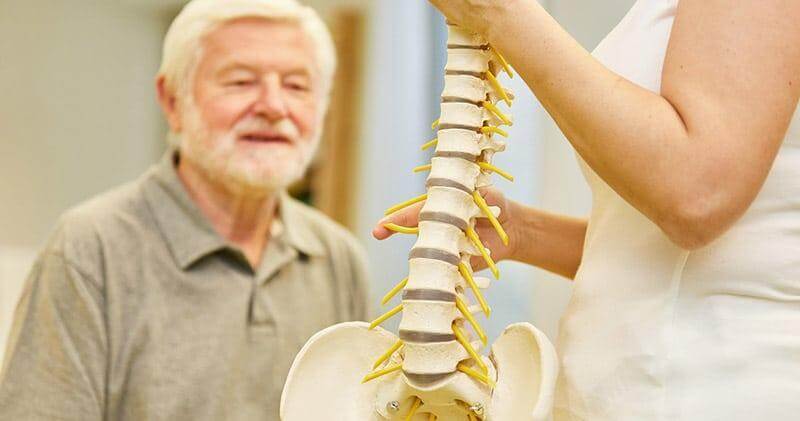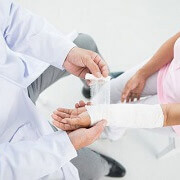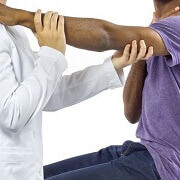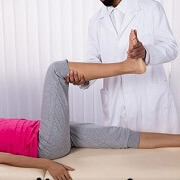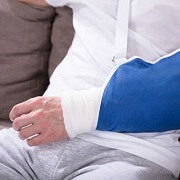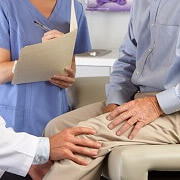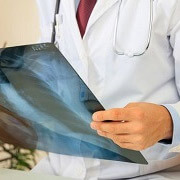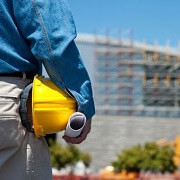Bone Spurs in the Lower Back
Bone spurs grow along bone edges and can appear anywhere in the body, but they are mostly common in joints. Bone spurs in the lower back can be particularly troublesome because they may appear in the space between the vertebrae, which protects the body’s most vital and dense collection of sensitive nerves, the spinal cord. This extra growth cramps the already small area surrounding the spinal cord and can pinch the nerves that run vital information to and from the rest of the body. This often leads to back pain and leaves arms and legs feeling numb or weak.
What is a Bone Spur?
Bone spurs, or osteophytes, are growths of extra bone that the body produces to replace worn or damaged bone parts. They occur mostly in joints or areas where bones regularly move against each other. A doctor will be able to suspect bone spurs from asking a few questions and performing a physical exam that assesses joint pain and flexibility. An X-ray, MRI, CT or bone scan will visibly reveal the extra growth.
What Causes Them?
Typically, a thick layer of cartilage surrounds the friction joints between bones. This layer protects bones from rubbing against each other and causing damage. However, conditions like osteoarthritis (commonly known as arthritis) breaks down this protective cartilage. This leaves bone endings exposed and susceptible to damage. When this happens, new bone, or a bone spur, will sometimes grow to try to repair the worn-down bone.
Bone spurs are very common, especially in people with arthritis. They can often go unnoticed unless the extra growth begins to press on sensitive nerves. This extra pressure will cause painful inflammation and swelling in the affected nerves. If they do not press, bone spurs are simply a bit of harmless extra bone in the body.
Do They Go Away?
Once a bone spur is grown, it will not disappear or reabsorb. There is no way to get rid of a bone spur besides cutting it off, but this is typically not recommended, unless the spur is critically compressing a nerve or the spinal cord, causing weakness. However, there are ways to reduce the risk of bone spur growth. Keeping physically fit will help reduce the amount of pressure on vulnerable areas like the lower back and knees and will hopefully minimize the amount of damage arthritis allows to these joints.
Treatments for Bone Spurs in the Lower Back
Bone spurs may be permanent, but there are ways to alleviate the pain and stress they cause to the joints and body. This can be particularly hopeful news for those suffering with back pain, as this vital and sensitive area is particularly susceptible to stress and pressure. Once diagnosed, there are several practical treatments for bone spur pain in the lower back, including exercises and physical therapy, medications, injections, and surgery.
Back Exercises – Physical Therapy
Exercising, stretching, and physical therapy are excellent ways to keep joints and muscles relaxed and improve smooth movement. There are several stretches that will specifically help alleviate pressure between vertebrae. For instance, hip twists for abdominal strengthening, and butt lifts both focus on supporting and strengthening the muscles in the lower back. The prayer stretch or child’s pose opens the spine in a natural curve, opening the areas between vertebrae where bone spurs to expand and give more room to the restricted nerves. Even stretching your hamstrings can help alleviate the pain as affected nerves often run through the back of the legs. Although stretching and exercise will not reduce bone spurs, it can shift and alleviate the pressure that typical activity places on them.
Medications
There are no medicines to cure bone spurs, but over-the-counter pain medications can alleviate the soreness they cause. These medications are easily accessible and can help soothe the inflammation caused by bone spurs. Acetaminophen or naproxen sodium (the common ingredient for Tylenol® or Aleve®, or their generic counterparts) are the most common medications recommended for treating this pain. However, these solutions may provide only temporary relief and may need to be taken regularly up to several times a day. They can also have serious systemic side effects when taken daily for an extended period, so they should only be taken regularly under the supervision of a physician.
Injections
If over-the-counter prescriptions aren’t enough to alleviate bone spurs in the lower back, a spinal cortisone injection may be recommended. In this minimally invasive treatment, soothing corticosteroids are injected directly to inflamed nerves through a needle. Steroid injections will often provide longer lasting relief than over-the-counter medications, and have far less risk of systemic side effects. The injection is only administered one to three times over the course of a few weeks, but the relief can last up to a few years afterwards.
Surgery
Surgery is a last resort for alleviating lower back bone spur pain. If the growth pain is beyond reasonable management, or if a spur is compressing the spinal cord, or if motor strength loss is detected, a doctor may want to remove these growths all together. This would involve opening the back and lumbar muscles to completely cut off the affected areas of bone. The surgery is a highly invasive procedure, and it comes with standard surgical risks as well as a long recovery time. However, removing bone spurs often provides the longest period of relief and a significant improvement in quality of life.
Treat Bone Spurs at Pinnacle Pain
Bones spurs are often harmless growths that can appear between worn down joints. However, bone spurs in the lower back can be particularly painful as they can press against the especially sensitive nerves in the spinal column. The pain from this can affect not only nerves in the back, but ones that extend to the legs and arms as well. This pain can often limit movement and hinder daily activities. Thankfully, Pinnacle Pain and Spine can help alleviate that pain with their wide variety of minimally invasive pain management and spine treatment options.
No related posts.
